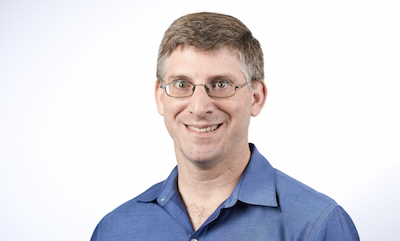‘Identify Solutions Rather Than Problems’.
 After a year and a half as interim chair of the Department of Environmental Health, Jonathan Levy will become the department’s full chair on January 1, 2019.
After a year and a half as interim chair of the Department of Environmental Health, Jonathan Levy will become the department’s full chair on January 1, 2019.
Levy says he is humbled to be the department’s third chair in its 42-year history, joining David Ozonoff and Roberta White in leading “a department that is not afraid to take a stand,” he says. “I will be standing on the shoulders of these giants as we move the department into the next phase of its history.”
As a postdoctoral researcher and assistant professor, Levy worked on the Healthy Public Housing Initiative, a community-based participatory study on asthma among children in public housing. “This project really emphasized for me how vulnerable populations often face elevated exposures to numerous stressors, many of which were related to their home and neighborhood environments,” Levy says. “I also learned the power of community-engaged research, and of listening to affected communities.”
As co-director of the Center for Research on Environmental and Social Stressors in Housing Across the Life Course (CRESSH), and in many other projects, Levy continues to work directly with communities, and to develop and apply new methods to understand the health effects of multiple, combined stressors in low-income urban environments.
“Like many public health researchers, I am motivated by doing work that makes a difference in people’s lives, and by focusing on identifying solutions rather than problems,” Levy says.
Before officially taking on the role of chair of environmental health, Levy talked about what comes next for the department as climate change looms, and why he is hopeful about the future.
What is your vision for the department going forward?
My vision for the department is perhaps best expressed by our newly developed departmental mission statement: “Working with and for communities to improve health through the development, translation, and dissemination of knowledge about environmental hazards.”
What does working with and for communities look like for the department?
Throughout the past four decades, the Department of Environmental Health has consistently had a strong community orientation, which I would like to continue and strengthen. To us, community has a dual meaning. We work closely with community groups to help address environmental challenges, but we also believe in the importance of community within the department. We pride ourselves on being highly collaborative, since in an interdisciplinary field like environmental health you need to draw upon a range of expertise to make progress. We provide close hands-on mentoring to graduate students and post-doctoral researchers, and engage all members of our departmental community in discussions about where we want to go as a department and how we want to get there.
What other areas of growth do you want to facilitate in the department?
I also want to build upon our strengths in understanding the health effects of exposures across multiple types of stressors, including mixtures of chemicals as well as non-chemical stressors, and applying systems science tools and other techniques to help make informed decisions. Enhancing our solutions orientation would also be important across areas ranging from chemicals to climate.
We want to train future public health leaders, whether or not they will be working in environmental health, on the importance of environmental exposures.
In addition, given the obvious importance of climate change for public health and the growing university emphasis on urban climate research, we want to grow our research and training activities in this area.
What does the latest climate change report mean to you?
The latest National Climate Assessment Report reaches me in a few different ways. First, it reinforces that climate change is likely the greatest public health challenge of the 21st century, since it touches so many people and so many aspects of health and well-being. As an environmental health researcher, we worry about the effects of air pollution, heat, infectious disease vectors, as well as the aftereffects of extreme events. This report emphasizes the growing environmental impacts for vulnerable populations. It is also a call for action, which resonates with me given my focus on solutions.
The positive spin on things is that this provides the greatest public health opportunity of our time. If we start to rethink how our homes and cities function, with health in mind, we can improve health and well-being even before considering the impact of climate change.
More personally, as a father to an 8-year-old and a 5-year-old, it’s hard not to look at this report and be disheartened, since it is really talking about what the world will look like in their lifetimes. But this also redoubles my desire to do work that can make a difference and reduce the impacts of climate change.
What makes you hopeful about the future of environmental health?
Our students, who represent the next generation of public health leaders, continually impress me. Our first-year doctoral students recently gave brief presentations on their lives leading up to enrolling at SPH, and they were uniformly impressive in their breadth of experiences, degree of insight about the world, and passion to make a difference.
Every MPH student I talk to has a firm sense of what they want to do in the world, and is far more sophisticated about how to make that happen than I was as a graduate student. There is much greater awareness about public health and environmental health than there was a generation ago, and that can only lead to good things over time.
This is obviously a challenging time for environmental health, and for public health in general, but there are tremendous opportunities to do work that matters, and SPH students have the desire and skills to make that happen.